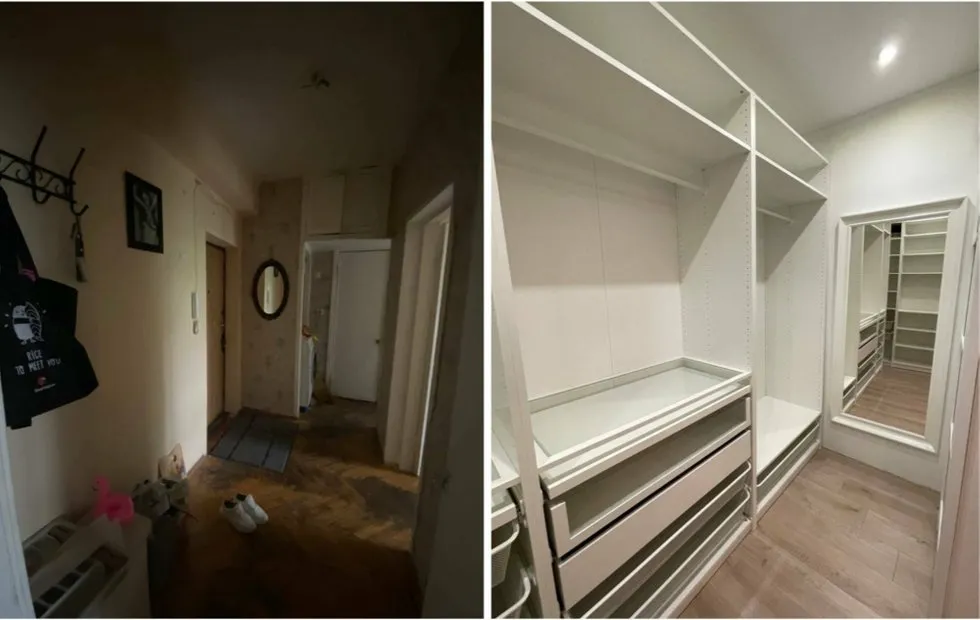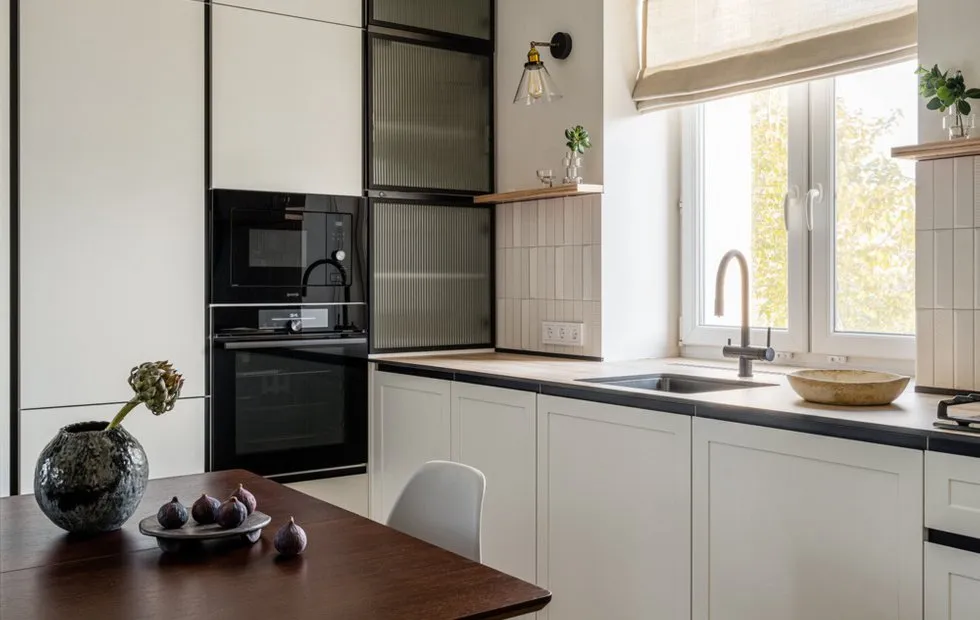There can be your advertisement
300x150
Small Bathroom Is Not a Verdict: 12 Tricks for Visual Expansion
Even the smallest bathroom can look stylish and spacious
You stand in your tiny bathroom and dream of a spa-size living room? Familiar. But until you can widen the walls, you can fool perception and make your brain think that the space is bigger than it actually is. Designers have spent years perfecting techniques that transform a closet-sized bathroom into a visually spacious room. And the secret isn't just mirrors.
Main takeaways from the article:
- Light colors reflect up to 80% of light, dark colors absorb it—there's a huge difference;
- Large tiles create fewer grout lines and make the space feel whole;
- Mirrors need to be placed correctly—some spots are more effective than others;
- Vertical lines lift the ceiling, horizontal lines expand walls;
- Transparent surfaces don't consume space;
- Proper lighting can visually increase the bathroom by up to 30%.
Color — Your Main Weapon Against Tightness
The first rule of a small bathroom: light tones work wonders. White, milk, light gray, soft beige reflect maximum light and create a feeling of airiness. Dark colors absorb light and visually narrow the space.
But that doesn't mean you have to make a sterile white bathroom. You can play with shades of one color—like using three tones of gray or beige. The key is to avoid contrasting combinations that fragment the space into pieces.
Pro tip: Make the ceiling a shade lighter than the walls. It will look higher, and the bathroom will appear more spacious. If the ceiling is white, the walls can be light gray or milky.
Large Tiles vs. Small Mosaic
The paradox: Large tiles work better in a small bathroom than small ones. Larger tiles create fewer grout lines, and the eye perceives the surface as a single whole. Small mosaic fragments the space into thousands of pieces.
The ideal size for a small bathroom is 30x60 cm or 40x80 cm tiles. You can even use large-format marble-like tiles—they add nobility to the bathroom and visually increase its area.
Another secret: it's better to lay tiles with minimal grout (1-2 mm) and grout in the same color as the tiles. Contrasting grout creates a grid that visually reduces space.
Mirrors — Not Anywhere and Not Any Type
A mirror is an obvious way to expand the bathroom, but there are nuances. A small mirror above the sink barely works. You need a full-wall mirror or at least 80% of the wall's width.
The best spot for a large mirror is the wall opposite the entrance. When entering the bathroom, you immediately see the reflection, and the space seems twice as big. A mirror on a side wall also works, but the effect is weaker.
Avoid mirrored tiles or multiple small mirrors—they create a sense of chaos. One large mirror in a simple frame or without one is the optimal choice.
 Design by Nadia Volk
Design by Nadia VolkVertical and Horizontal Lines Change Geometry
Vertical stripes lift the ceiling, horizontal lines expand the walls. Use this in finishing. Tiles can be laid vertically to make the bathroom look taller. Or horizontally to make it wider.
Another trick: Make one wall an accent wall with vertical stripes (tiles, wallpaper, paint). This visually lifts the ceiling and adds dynamism.
Stripes don't have to be contrasting. A simple texture—like tiles with vertical relief or thin grooves—is enough.
Transparent Surfaces Don't Steal Space
A glass shower cabin instead of a non-transparent one takes up the same space but looks almost weightless. Transparent glass doesn't break the line of sight and creates a sense of a unified space.
The same applies to furniture: glass shelves, transparent chair, acrylic accessories visually don't clutter the bathroom. They are functional but nearly invisible.
If fully transparent surfaces seem too cold, choose matte or tinted glass—the effect stays the same but adds warmth.
Lighting — The Director of Space
Dull lighting compresses space, bright light expands it. In a small bathroom, you need lots of light, preferably from different sources.
Main light—ceiling-mounted, evenly illuminating the whole bathroom. Additional—mirror backlighting, niches, shelves. You can add an LED strip around the ceiling perimeter—it creates a floating effect and visually lifts it.
Avoid yellow light—it makes the bathroom warm but tight. White or slightly blue-tinted light creates a feeling of freshness and spaciousness.
 Design by Pavel Bakanych
Design by Pavel BakanychMinimal Furniture with Maximum Functionality
Every item in a small bathroom should serve multiple functions. The vanity unit is also storage space. The mirror is also a wardrobe. The shelf has towel hooks.
Wall-mounted furniture frees the floor and creates a sense of lightness. Vanity units on legs also work—they let you see the floor, and the bathroom appears larger.
Get rid of unnecessary accessories. Ten bottles on a shelf create chaos, three beautiful ones—style.
Unified Color Palette for Plumbing
White plumbing is the winning choice for a small bathroom. It blends with light-colored walls and doesn't draw extra attention. Colored or black plumbing can be stylish but visually "takes up space"NaN
More articles:
 "Stalinist Empire in the Middle of the Forest": Mystery of the Soviet Hotel
"Stalinist Empire in the Middle of the Forest": Mystery of the Soviet Hotel Walk-in Closet from Nowhere: How to Grab 5 Square Meters from a Standard Layout
Walk-in Closet from Nowhere: How to Grab 5 Square Meters from a Standard Layout Apartments in Stalin-era Buildings: 5 Inspirational Interiors That Will Astonish You
Apartments in Stalin-era Buildings: 5 Inspirational Interiors That Will Astonish You Why Your Apartment Looks Cheap Even If the Renovation Was Expensive
Why Your Apartment Looks Cheap Even If the Renovation Was Expensive How beautifully designed a 5 sqm hallway in a Moscow Stalin-era apartment
How beautifully designed a 5 sqm hallway in a Moscow Stalin-era apartment Star Communal Living: How Soviet Celebrities Lived in Shared Apartments
Star Communal Living: How Soviet Celebrities Lived in Shared Apartments Kitchen of Your Dream for Reasonable Money: Secret Tips Used by Designers for Their Homes
Kitchen of Your Dream for Reasonable Money: Secret Tips Used by Designers for Their Homes 5 Most Recognizable Buildings in Moscow: From Imperial Mysteries to Architectural Revolutions
5 Most Recognizable Buildings in Moscow: From Imperial Mysteries to Architectural Revolutions